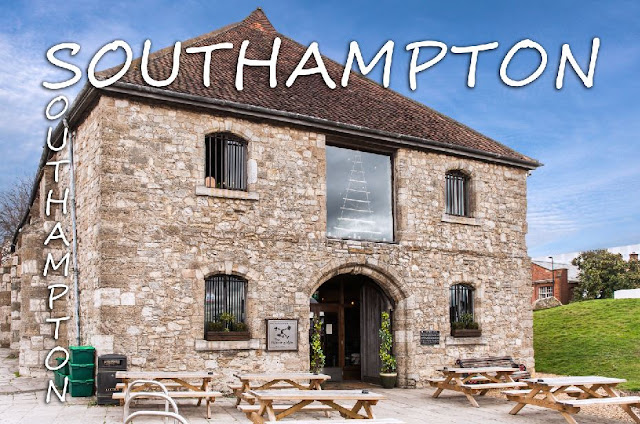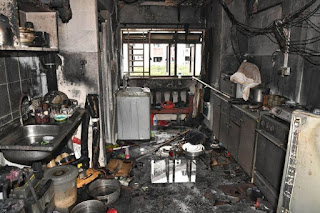Well, with the General Election just over the horizon and
having been asked by a number of Southampton homeowners and Southampton buy to
let landlords what the different main parties would do to the local property
market, in this week’s article we focus on Labour’s contentious Right to Buy proposal
for private tenants. Launched in September, the plan was designed to force
landlords to sell their buy to let investments to their tenants who wished to buy
them…. at a substantial discount.
Shadow Chancellor John McDonnell told the FT in September that, under
a new Labour government, tenants would be given the Right to Buy their tenanted
home with a hefty discount - just like the Tory Right to Buy policy for Council
house renters that came into force after the 1979 General Election.
Yet it was not certain who would
have been expected to pay for discounts on buy to let homes sold to tenants.
Four years ago, Jeremy Corbyn advocated using the £14bn of tax allowances that
UK landlords had at the time to pay for these discounts, allowing tenants to
buy their tenanted home at the same discount as they would a local authority
home without leaving the landlord out of pocket.
However, these tax allowances
have been substantially reduced with the changes in the way mortgage interest
relief on landlords’ mortgages is calculated, meaning that this method of
funding would no longer be feasible. In fact, bankrolling a project at a modest
20% discount for the whole of the UK would cost £177.84bn; a lot more than the
£14billion quoted by Mr Corbyn. So, what would that policy cost Southampton landlords?
Labours
policy of 20% Right to Buy discount could
cost
Southampton landlords £1,463,810,960
… and if Southampton tenants
got the maximum discount of 35% that Council tenants have with the Right to Buy
scheme that would cost Southampton landlords £2,561,669,180.
However, it appears Mr McDonnell has re-considered the
original suggestion and done a (slight) U-turn, stating it should apply only to
the richest landlords and not those who only own a couple
of rental properties. He was quoted in The Times as saying, “There’s a
large number of individuals or families who have bought another property as an
asset for the future and we wouldn’t want to endanger that”.
Yet, even this somewhat watered-down account still creates threats
to the private rental sector and Southampton’s overall stock of private rented
homes. John McDonnell seems to have altered his initial thought to permit all private
tenants the right to buy from their landlords to apply only to those with more
than a couple of buy to let properties. The shift appears to be aimed at pacifying
middle England small time landlords who are probably swing voters with smaller
property investments and instead, Labour’s focus is on the larger scale buy to
let investors. Looking at the stats, and being generous that we are only
looking at landlords with 6 or more (not the couple that Mr McConnell
suggested) ……
Of the 25,247 rental properties in Southampton, 6,892
are owned by Southampton landlords with 6 or more properties in their portfolio
To target these larger scale landlords, who would unquestionably
leave the property market in their hordes if their buy to let investments could
be so easily destabilised. There would be mass sell offs before the legislation
became law, thus making the tenants homeless (and who would house them??) ..and
even if that didn’t happen, it would be very damaging and someone (probably
landlords) would have to stump up the £48.54bn national bill (£399,595,400 in Southampton alone).
If Labour want to fix the property market, it needs
long term certainty and confidence, yet even these revised policies would instantly
challenge this
And don’t think I am just Labour bashing here as the Tory 2014
Help to Buy scheme hasn’t really helped either as their scheme which gave first
time buyers (FTB) a 20% interest free loan, if they put down a 5% deposit, has
been a boon for new home builders.
The Tory’s announced recently another £10bn of taxpayer’s
money will be pumped into a scheme which, quite frankly, wasn’t needed to boost
an already decent property market. The banks were already giving 95% first time
buyer (FTB) mortgages from 2010 and the Help to Buy scheme was only allowed on
new homes purchases, meaning it didn’t help the larger second-hand market. That
£10bn could have been better spent building Council houses, not helping the
large plc builders line their pockets with Government cash.
Next week I will be focusing on the Conservative Party
Policy and what difference that will make to our Southampton Property Market. You can read the article on the link below.
https://southamptonproperty.blogspot.com/2019/12/are-torys-selling-off-final-part-of.html
https://southamptonproperty.blogspot.com/2019/12/are-torys-selling-off-final-part-of.html
If you would like to pick my brains on the Southampton Property Market – pop in for a coffee or drop me a line on social media or email.
If you are looking for an agent that is well established, professional and communicative, then contact us to find out how we can get the best out of your investment property.
Email me on brian.linehan@belvoir.co.uk or call on 023 8001 8222.
Don't forget to visit the links below to view back dated deals and Southampton Property News.
Twitter, https://twitter.com/sotonbelvoir
LinkedIn, https://www.linkedin.com/in/brianlinehan
LinkedIn, https://www.linkedin.com/in/brianlinehan








